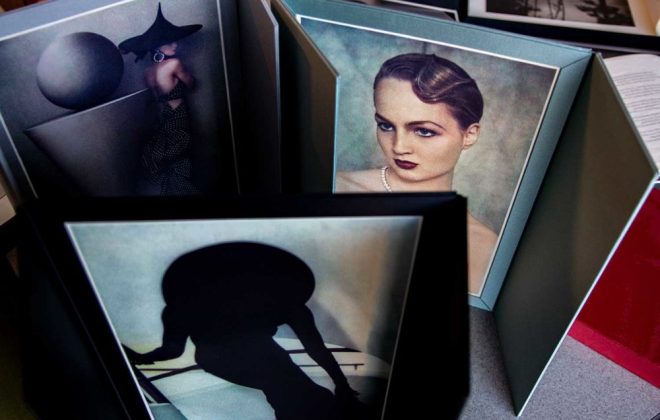By Mark Engebretson
Steven Albahari recently purchased In Cold Blood, the 1966 non-fiction novel by Truman Capote. For Albahari, it was important to get a first edition.
“I want to read In Cold Blood in the way that it was issued,” he said. “Because I think it adds another dimension to the experience. I mean, the paper it was initially printed on and how it was handled. I love reading books, I don’t like reading screens.”
That helps one understand what has driven Albahari these many years as the longtime publisher of 21st Editions, The Art of the Book ® — a company that has published beautiful and unique handmade books that combined photography with literature and poetry. Each book was unique in its content and printing. Over the past 20 years, Albahari’s work and leadership has certainly helped the continuing effort in further elevating photography as a fine art, first championed by Alfred Stieglitz.
“Selecting and bringing together various artists from multiple disciplines and orchestrating their efforts, while marrying the word, image, and binding together with classic, handmade processes is what we do and have been doing these past 20 years,” Albahari says. “It’s what we thrive on and why we work.”
Acquisition includes production notes, process prints
Recently, the University of Minnesota Libraries acquired the entire 21st Editions collection, consisting of 63 volumes. The acquisition also includes the firm’s archives — process prints with notes from the artist or the publisher, sketches, correspondence, and production notes.
Albahari said the initial reason for choosing the University of Minnesota as the home for the collection and archive was due to the expertise of the Libraries’ curator, Deborah Ultan. He had met her a year ago when Ultan approached him about buying a book he owned for the Libraries’ collection.
He later invited her back to see the 21st Editions materials.
Pam Clark, who works closely with Albahari, recalls that as Ultan was standing in the publishing house surrounded by the collection, “Deborah was astonished by the craftmanship.”
“She could hardly catch her breath,” Albahari adds.
Soon, discussions around acquisition started.
“I loved Deborah — her enthusiasm, her vision, her historical perspective. She seemed to be very, very smart,” he said. “I think one of the most important things for me was her custodianship of the collection, at least to begin with,” he said.
The U of M, Twin Cities a draw for Albahari
Albahari also appreciated the culture and book community of the Twin Cities area.
“I knew the public was engaged with the art of the book through the Center for the Book and through what Deborah was doing,” he said, adding that the University of Minnesota was equally important. “You have 52,000 students. The population was huge. So the possibility of the collection being used was really the priority.”
Ultan said that there’s increasing interest from faculty to bring classes into the Libraries and to see and study primary resources.
“The reason I bought the first book from 21st Editions was because I knew it would be consulted,” she says. “Once I was introduced to the entire collection, I was flooded with a surge of visions of how the collection could be researched and exhibited on campus.”
Photography is Albahari’s expertise and he credits longtime editor, poet, and 21st Editions’ co-founder, John Wood, with aligning literature and poetry to the photography.
Writers ranged from Pulitzer winners to aspiring poets
“We wanted to expand the dialogue by virtue of bringing people that really didn’t write on photography, but were scholars and academics and artists and poets at the top of their field,” Albahari said. “We brought in people like Richard Wilbur and Ann Beattie, Edmund White, Annie Dillard, Edward Albee, other Pulitzer Prize winners, and young, aspiring poets and writers. And John Wood was the man that shaped the word for these volumes and brought these writers in.”
Added Clark: “Some people have collected our books because of the photographer, but a lot of them have also collected our books because of the writing.”
Of course, the third piece is the quality of the book itself.
“These are beautifully handmade, limited edition books, whose bindings are as important as their photographs and whose text is also as important as the binding — we are, as we’re trademarked, the Art of the Book,” Albahari said. “Some think that’s pretty ostentatious, but you know what, there’s nobody in the world that’s done what we’ve done. Nobody.”
For more information
The collection has arrived at the University Libraries and is currently being processed. Access to the collection is by appointment. Please visit our Archives and Special Collections website for further information.






